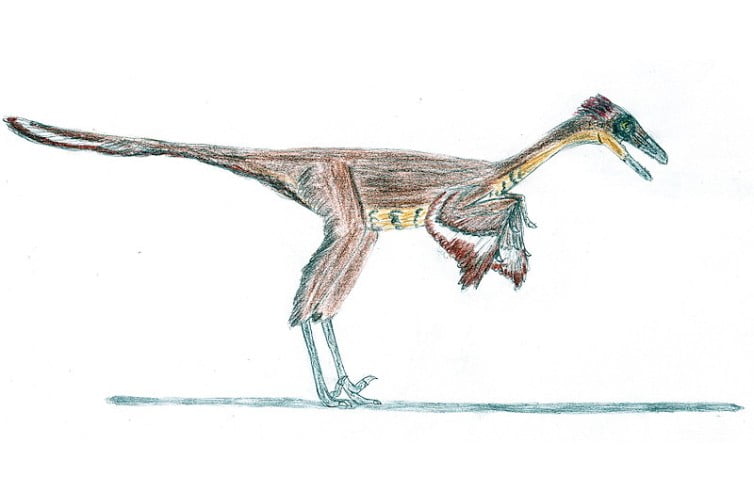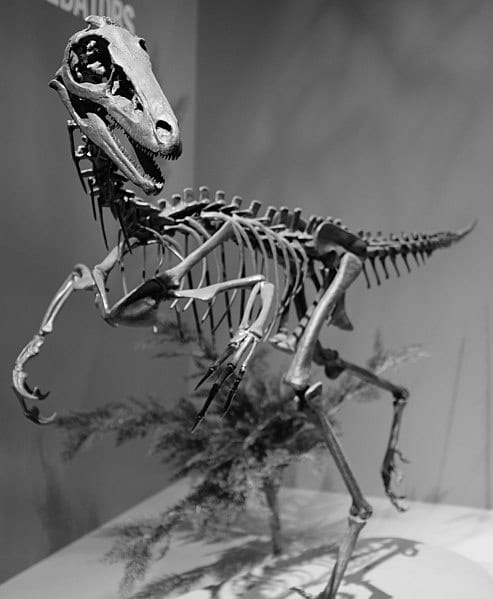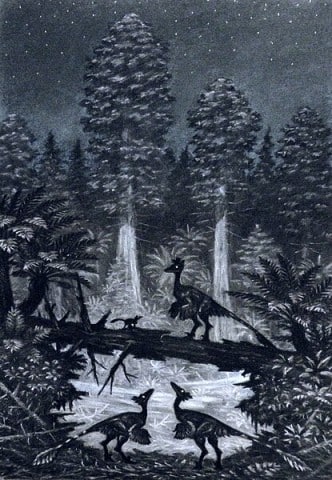In the vast expanse of prehistoric life, the Troodon emerges as a creature of particular interest. This small dinosaur is often overshadowed by its larger counterparts yet holds a significant place in the annals of paleontology. Its name, derived from the Greek words for “wounding tooth,” hints at its carnivorous nature in stark contrast to its diminutive size. Its unique characteristics–particularly its surprising intelligence–have sparked numerous studies and invited us to delve deeper into its existence during the Late Cretaceous period.
The Troodon’s journey from a fossil to a well-studied dinosaur species is a testament to the relentless pursuit of knowledge by paleontologists. The first discovery of its remains, though limited, opened the doors to a world previously unknown. As we unravel the mysteries of the Troodon, we are transported back in time to walk alongside these creatures that once roamed our planet.
Key facts
| Keyword | Fact |
|---|---|
| Troodon pronunciation | Troh-o-don |
| Meaning of name | Wounding tooth |
| Group | Theropoda |
| Type Species | Troodon formosus |
| Diet | Carnivorous |
| When it Lived | 83.5 to 66.0 MYA |
| Period | Late Cretaceous |
| Epoch | Judithian to Lancian |
| Length | 8.0 ft |
| Height | 3.0 ft at hips |
| Weight | 0.06 tons |
| Mobility | Moved on two legs |
| First Discovery | 1855 by Ferdinand Vandeveer Hayden |
| Location of first find | Montana, USA |
| First Described by | 1856 by Joseph Leidy |
| Holotype | PDM 14/2008 |
Troodon Origins, Taxonomy and Timeline

The Troodon, whose name translates to ‘wounding tooth’ from Greek, is a fascinating creature from the Late Cretaceous period. The name is a nod to the dinosaur’s sharp, serrated teeth that were likely used for hunting and tearing into prey. It belongs to the Theropoda group, a clade of bipedal dinosaurs that also includes the mighty Tyrannosaurus and the Velociraptor.
Taxonomically, the Troodon is further classified under the family Troodontidae within the order Saurischia. The type species, Troodon formosus, is the most well-studied and provides valuable insights into this intriguing dinosaur’s life.
The Troodon’s timeline is set in the Late Cretaceous period, specifically at the end of the Age of Dinosaurs. This was a time when the Earth was warm and sea levels were high, leading to a diverse array of ecosystems teeming with life.
Listen to Pronunciation
Discovery & Fossil Evidence

It was first discovered in 1855 by Ferdinand Vandeveer Hayden, a geologist and surveyor known for his explorations in the American West. The initial find was made in Montana, USA and consisted of a single tooth. Despite the limited material, Joseph Leidy described the dinosaur within a year, marking the beginning of our understanding of the Troodon.
Later finds have expanded our knowledge about this dinosaur, with additional fossils discovered in Canada and possibly Asia. These discoveries include partial skeletons and numerous teeth that provide a more complete picture of its physical characteristics and lifestyle.
Notable specimens include the PDM 14/2008, the holotype for Troodon formosus. This specimen was discovered in the Judith River Formation and has been instrumental in our understanding of the dinosaur’s morphology and behavior.
Troodon Size and Description
Despite its small size, this was a remarkable dinosaur. Its physical characteristics and adaptations reveal a creature well-equipped for survival in the Late Cretaceous period.
Short description of Troodon
The Troodon was a small, bird-like dinosaur known for its distinctive teeth and large brain relative to its size. The dinosaur’s head was equipped with sharp, serrated teeth, hinting at its carnivorous diet. Notable specimens, such as the PDM 14/2008, have provided valuable insights into the Troodon’s lifestyle and behavior. These fossils reveal a creature that was well-adapted to its environment, capable of surviving and thriving in the diverse ecosystems of the Late Cretaceous period.
Size and Weight of Type Species
This was a relatively small dinosaur. According to various estimates, it likely measured around 8 feet in length and stood about 3 feet tall at the hips. Its weight is harder to determine but it’s generally believed to have weighed around 110 lbs (0.06 tons). These estimates, however, can vary based on the individual specimen and the method used for calculation.
The Dinosaur in Detail
Among its unique features that set it apart from other dinosaurs, the size of its brain is one of the most impressive. It was large relative to its body size, which suggests a higher level of intelligence compared to other dinosaurs. This, combined with its keen senses, likely made the Troodon an efficient hunter.
Its teeth are another notable feature. Unlike most theropods, it had serrated teeth that were likely used for tearing into prey. This adaptation, along with its agile body and fast speed, suggests a carnivorous diet.
Its body was slender and lightweight with a long, stiff tail that likely aided in balance. Its limbs were long and slender, suggesting that it was a fast and agile runner. It moved on two legs, a characteristic common among theropods.
The Troodon in its Natural Habitat

This carnivorous dinosaur lived during the Late Cretaceous period, a time when the Earth was warm and sea levels were high. This resulted in a diverse range of habitats–from coastal plains to dense forests. With its small size and agile body, the Troodon was likely well-adapted to these environments.
As a carnivore, its diet likely consisted of small animals and possibly insects. Its sharp, serrated teeth would have been useful for tearing into prey. The dinosaur’s large brain and keen senses suggest that it was an efficient hunter that was capable of tracking and capturing its prey with precision.
Their social behavior is still a topic of debate among paleontologists. Some evidence suggests that it may have been a solitary hunter while other studies propose that it lived in small groups. Regardless of its social habits, its adaptations and behavior would have had a significant impact on its environment and the other creatures that shared its habitat.
Interesting Points about Troodon
- It had one of the largest brains relative to body size of any dinosaur, suggesting it was highly intelligent.
- It had excellent vision and was likely a nocturnal hunter.
- The teeth were unique among theropods as they had serrations more similar to herbivorous dinosaurs.
- Some paleontologists believe that it may have had feathers, similar to birds.
- It is one of the few dinosaurs for which we have evidence of brooding behavior, similar to modern birds.
Contemporary Dinosaurs
Throughout prehistoric time, this creature stands out as one of remarkable intelligence. It shared its world with a captivating array of contemporaries. Among these were the Pachycephalosaurus, Tsintaosaurus, and Protoceratops. Their lives were intertwined in a complex web of survival and competition, painting a vivid picture of a time long past.
The Pachycephalosaurus was known for its distinctive domed skull and might have been a frequent sight for the Troodon. Despite the stark contrast in their physical attributes–the Troodon’s slender form against the Pachycephalosaurus’ robust build–they shared the same environment. One could imagine the Troodon observing from the shadows, its keen eyes studying and perhaps assessing the potential risks and rewards of an encounter. The Protoceratops, a smaller relative of the Triceratops, was another dinosaur of this time with a unique approach to defense from predators. It would have played a very similar role to the Pachycephalosaurus to our Troodon, even if it accomplished this through different behaviors.
The peculiar crest of the Tsintaosaurus added a sense of intrigue to this landscape. It lacked the heavy defenses of the Pachycephalosaurus and Protoceratops. As another herbivore, it might have been a source of competition for plant food. The interactions of these herbivores, whether they were of competition or curiosity, shaped the Troodon’s existence and now offer us a glimpse into the dynamic and vibrant world it inhabited.
List of All Dinosaurs
We have created a list of all dinosaurs we have covered here, sorted across the seven main groups of dinosaurs. We also include information about their type of diet, (omnivore, herbivore or carnivore) and the time they lived.
Frequently Asked Questions
The name means ‘wounding tooth,’ a reference to the dinosaur’s sharp, serrated teeth that were ideal for hunting and tearing into its prey.
It belongs to the Theropoda group, a clade of bipedal dinosaurs. It is part of the Troodontidae family.
This carnivore lived during the end of the Late Cretaceous period, specifically around 83.5 to 66.0 million years ago.
The first fossils were discovered in Montana, USA by Ferdinand Vandeveer Hayden in 1855.
As a carnivore, it likely ate small animals and possibly insects.
Sources
- https://zenodo.org/record/1038128
- https://pubs.geoscienceworld.org/uwyo/rmg/article-abstract/20/2/123/110683/Baby-dinosaurs-from-the-Late-Cretaceous-Lance-and
- https://cdnsciencepub.com/doi/10.1139/e77-061
- https://www.biodiversitylibrary.org/bibliography/60482
- https://www.nature.com/articles/s41598-021-83745-5
Please note that the information in this article is based on various sources, drawing on scientific research, fossil evidence, and expert analysis. The aim is to provide a comprehensive and accurate overview of the Troodon, but please be aware that our understanding of dinosaurs and their world is constantly evolving as new discoveries are made.
This article was last fact checked: Joey Arboleda,06-14-2023
Featured Image Credit: El fosilmaníaco, CC BY-SA 3.0, via Wikimedia Commons
